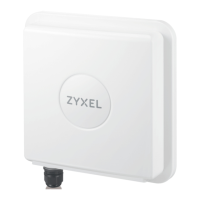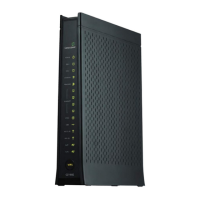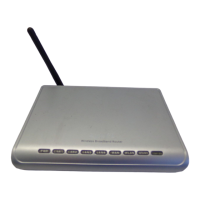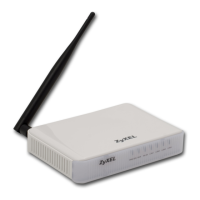LTE2566-M634 User’s Guide
74
CHAPTER 10
NAT
10.1 Overview
NAT (Network Address Translation - NAT, RFC 1631) is the translation of the IP address of a host in a
packet. For example, the source address of an outgoing packet, used within one network is changed to
a different IP address known within another network.
The figure below is a simple illustration of a NAT network. You want to assign ports 21-25 to one FTP, Telnet
and SMTP server (A in the example), port 80 to another (B in the example) and assign a default server IP
address of 192.168.1.35 to a third (C in the example).
You assign the LAN IP addresses to the devices (A to D) connected to your LTE2566-M634. The ISP assigns
the WAN IP address. The NAT network appears as a single host on the Internet. All traffic coming from A
to D going out to the Internet use the IP address of the LTE2566-M634, which is 192.168.1.1.
Figure 54 NAT Example
Note: You must create a firewall rule in addition to setting up NAT, to allow traffic from the
WAN to be forwarded through the LTE2566-M634.
10.1.1 What You Can Do
• Use the Port Forwarding screen to set a default server and change your LTE2566-M634’s port
forwarding settings to forward incoming service requests to the server(s) on your local network
(Section 10.2 on page 76).
• Use the Port Trigger screen to change your LTE2566-M634’s trigger port settings (Section 10.3 on page
78).
• Use the ALG screen to enable or disable SIP (VoIP) ALG (Application Layer Gateway) in the LTE2566-
M634 (Section 10.4 on page 78).
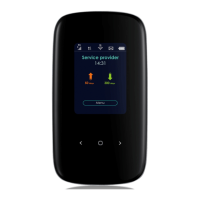
